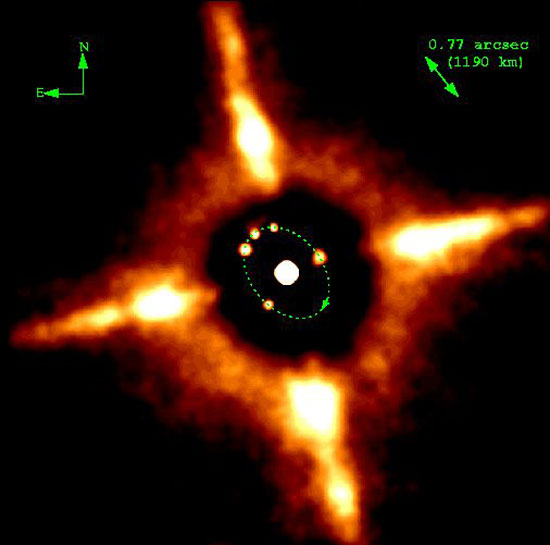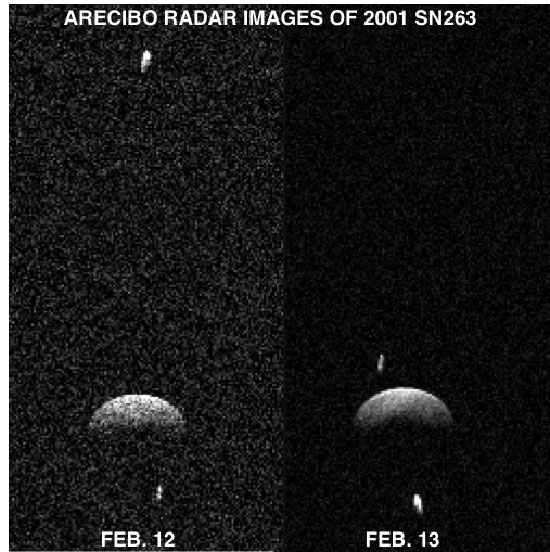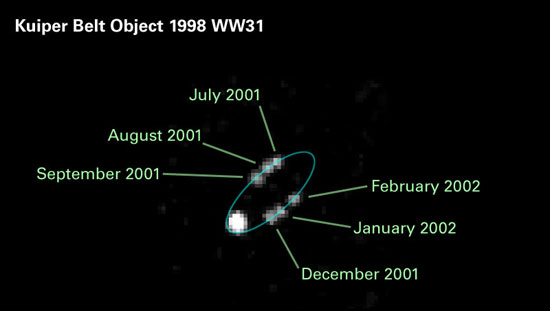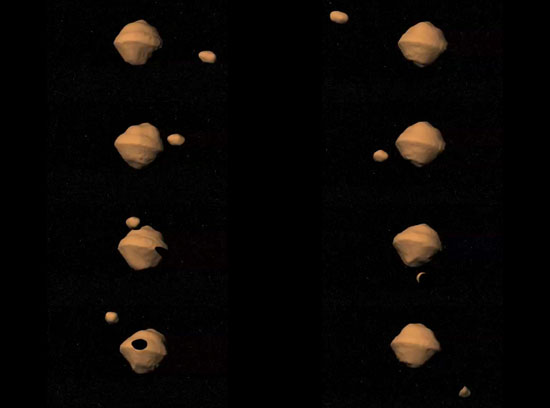In the past decade, new observations have shown that asteroids are no longer the solitary, dense, potato-shaped rocks we thought them to be, orbiting the Sun unchanged eon after eon. The December issue of S&T describes the latest research that paints a different picture. Asteroids, it turns out, are porous collections of small rocks — no more dense than water — and as these loose rubble piles evolve over time, they often break apart into pairs and even triplets. What started as a few groundbreaking observations has turned into 214 detections of multiple asteroid systems, include 204 binaries, 9 triples, and Pluto's unique sextuple system.
How does one asteroid become two, or even three? The simulation below shows the evolution of an asteroid from above (left) and the side (right). Gravity holds the "rubble-pile" together, and as it rotates, the angular acceleration forces the small rocks to reposition themselves into an elongated shape. Eventually, the asteroid fragments into multiple pieces and forms a binary system.
Simulations by K. Walsh and P. Michel (Observatoire de la Cote d'Azur).
Of 214 systems, some of the highest resolution images of asteroid families are displayed below:

45 Eugenia hosts a moonlet, Petit-Prince, shown here in five superimposed images. Jean-Charles Cuillandre (CFHT), CFHT |

The Arecibo Observatory used radar to discover the first triple near-Earth asteroid system. The telescope bounced a 500,000 Watt radio signal off the asteroid and its two moons, and the dish's extraordinarily sensitive detectors listened for the echo that came back at less than a billionth of a billionth of a billionth of a watt. M. Nolan / Arecibo Observatory |

The Hubble Space Telescope captured six snapshots of the motion of a moonlet relative to its asteroid host. NASA and C. Veillet (CFHT) |

This figure shows the shape of the near-Earth asteroid (66391) 1994 KW4 derived from radar imaging data and the orbit of its companion. The prominent bulge at the equator of the primary is characteristic of binaries that form from rapid spinning and fission. Also shown are three composite radar images showing the larger primary (center) and the movement of the secondary throughout the course of observations. Image source: D. Scheeres, Radar image credit: L. Benner, NASA / JPL |
 0
0

Comments
You must be logged in to post a comment.